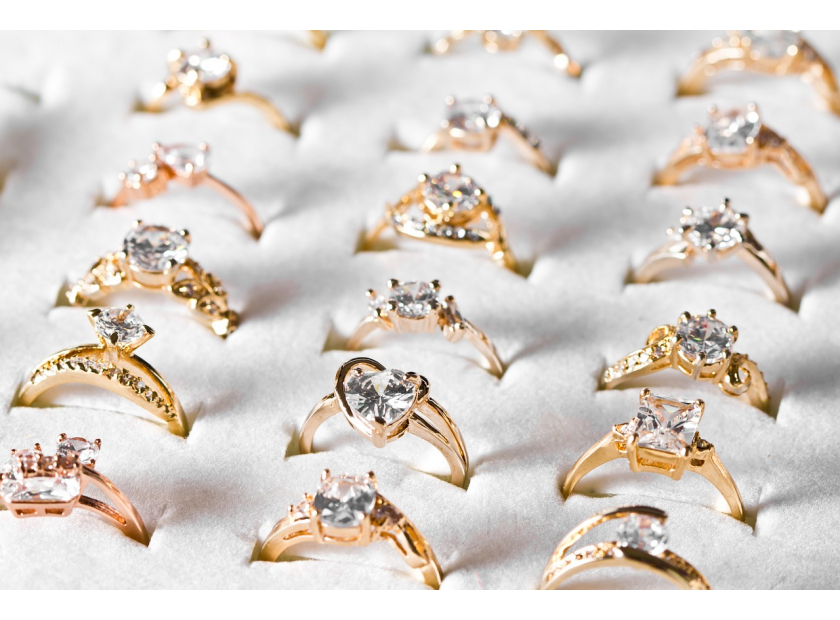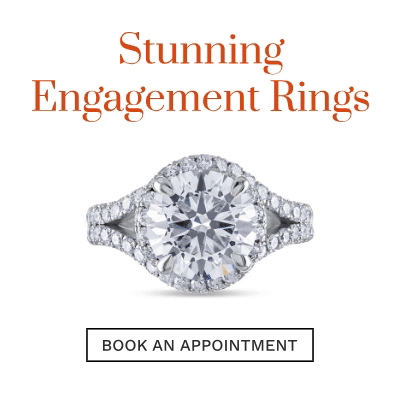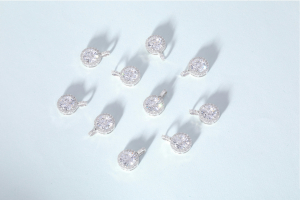USD
/
USD
/
Shipping to:
Currency:
Choosing a diamond engagement ring is one of the most personal and exciting decisions you’ll make. It’s not just about selecting something beautiful—it’s about finding a ring that suits your lifestyle, daily activities, and personal style. Whether you’re an adventurer, a minimalist, or someone who loves a touch of glamour, your ring should be a reflection of both your love story and how you live your life.
Here’s how to find the perfect balance between beauty and practicality when choosing your diamond engagement ring.
Consider Your Daily Activities
The first thing to think about is your daily routine. Are you someone who’s constantly on the go, or do you prefer a more laid-back lifestyle? The way you live will directly impact the kind of ring that’s best suited for you.
How Often Will You Wear Your Ring?
If you’re planning to wear your ring every day, durability and comfort are key factors to consider. Rings with intricate settings or raised designs can be prone to damage if you’re using your hands frequently. For example, if you work in a hands-on job like teaching or nursing, a simpler design will be more practical.
Story: Sarah, a nurse, chose a bezel-set diamond ring because it was sleek, durable, and wouldn’t catch on her gloves during long shifts. She wanted a ring that could withstand the rigors of her job without sacrificing style.
Check out durable engagement rings designed for daily wear.
Are You Active?
If you have an active lifestyle, you’ll want a ring that can keep up with you. For people who enjoy hiking, yoga, or working out regularly, a lower-profile ring with a secure setting is a smart choice. High-profile rings, like those with a tall diamond setting, are more likely to get snagged on clothing or equipment.
Story: Emma, a fitness enthusiast, opted for a round diamond set in a low-profile, tension setting. This design allowed her to keep her ring on while hitting the gym or going on outdoor adventures without worrying about damaging it.
For active individuals, explore sturdy diamond rings that can handle everyday wear.
Choose the Right Metal for Your Lifestyle
The metal you choose for your band is just as important as the diamond. Some metals are more durable than others, and some may require more upkeep.
Durability of Different Metals
Platinum is one of the most durable metals, making it a popular choice for people with busy or active lifestyles. It’s resistant to scratches and doesn’t lose its shape easily. White gold is another strong option, but it does need to be re-plated occasionally to maintain its shine.
If you prefer a warmer tone, yellow or rose gold are beautiful choices. However, gold is softer than platinum, so you’ll need to be more careful to avoid dents and scratches.
Story: Jake, who works as a mechanic, chose a platinum band for his fiancée because he knew she would need something sturdy. Even after wearing it every day, the ring has maintained its original shine with very little maintenance.
Explore wedding bands made from platinum and other durable metals.
Allergy Considerations
If you have sensitive skin or allergies, platinum and palladium are hypoallergenic metals that won’t irritate your skin. They’re also durable, so you won’t have to compromise between comfort and strength.
Select the Best Diamond Shape for Your Routine
The shape of your diamond isn’t just a matter of style—it can also impact how well it holds up to your daily routine. Some diamond shapes are more practical for everyday wear, while others might require a bit more care.
Low vs. High-Profile Diamond Settings
Lower-profile settings, such as bezel or flush settings, keep the diamond close to the band, reducing the risk of catching on clothing or getting knocked around. This is ideal if you work with your hands or have an active lifestyle. High-profile settings, like prong settings, lift the diamond higher off the band, giving it more exposure but making it more susceptible to damage.
Story: Liz, who works as a fashion designer, chose a low-profile, cushion-cut diamond because it combined elegance with practicality. The diamond sits securely in the band, making it easier to wear while she works.
Shapes That Resist Chipping
Certain diamond shapes, such as round, oval, and cushion cuts, are less likely to chip compared to emerald or marquise cuts, which have pointed edges. If you’re rough with your hands or work in an environment where your ring might be bumped frequently, choosing a more rounded shape can help your diamond last longer.
Check out diamond engagement rings with practical and durable shapes.
Choose a Setting That Matches Your Lifestyle
The setting of your diamond ring is another crucial element. It not only affects the look of your ring but also its durability and maintenance needs.
Best Settings for Active Lifestyles
For those with active lifestyles, bezel settings, where the diamond is encased in metal, provide the most protection. Tension settings are also a strong option, offering a secure hold while allowing light to pass through the diamond for added sparkle.
Story: Megan, a personal trainer, chose a tension setting for her diamond because it offered both security and sparkle. She didn’t have to worry about her ring slipping off or getting damaged during her workouts.
Classic Solitaire vs. Halo vs. Pave Settings
Solitaire settings, where the diamond stands alone on the band, are a timeless, low-maintenance choice. On the other hand, halo and pave settings, where smaller diamonds surround the main stone, are more intricate but require more upkeep. If you love a little extra sparkle but aren’t concerned about maintenance, these designs could be perfect for you.
For a balance of elegance and durability, explore our eternity rings.
Don’t Forget About Ring Size and Comfort
Comfort is key when it comes to your engagement ring. After all, you’ll be wearing it day in and day out, so it needs to fit perfectly.
Proportional Ring Size for Comfort
The size of your diamond should feel balanced on your finger. If you have small hands, a large diamond might feel cumbersome or awkward. Conversely, if you have larger hands, a tiny diamond could get lost. A jeweler can help you find a proportional size that’s both comfortable and flattering.
Adjustability for Changing Lifestyles
Your lifestyle may change over the years—whether it’s through weight fluctuations or pregnancy. Choose a ring style that can be easily resized or adjusted to accommodate those changes. Some bands are designed with small breaks that allow for easier resizing without affecting the ring’s integrity.
Explore lab-grown diamonds for customizable options that can fit your changing lifestyle.
Think About Fashion Style and Trends
Your engagement ring should also reflect your personal fashion style. Whether you love timeless classics or trendy designs, finding a ring that complements your wardrobe is essential.
Personal Aesthetic
Consider whether you want your ring to reflect your personal aesthetic. If you prefer minimalist jewelry, a sleek solitaire might be the way to go. If you love statement pieces, you could opt for a more ornate design, such as a vintage-inspired or multi-stone ring.
Story: Olivia, a lover of vintage fashion, chose a rose gold engagement ring with a pear-shaped diamond and intricate detailing. The ring perfectly reflected her love for all things classic and romantic.
Balancing Trends and Timelessness
Trends come and go, but your engagement ring will be with you forever. While it’s fun to incorporate trendy elements into your ring, choosing a design that has a timeless quality will ensure you love it for years to come.
Maintenance and Care for Long-Lasting Sparkle
Keeping your ring in good condition requires some effort, depending on the setting and materials.
How Much Time Are You Willing to Invest?
Rings with intricate details or multiple stones, like halo or pave settings, require regular professional cleaning to maintain their sparkle. Simpler designs, like solitaires or bezel settings, are easier to care for and can be cleaned at home.
Story: Rachel, a busy entrepreneur, opted for a platinum solitaire because it was low-maintenance and durable. She didn’t have the time to take it in for frequent cleanings, and the design allowed her to keep it looking great with minimal effort.
Tips for Long-Lasting Sparkle
Regularly clean your diamond at home with a gentle jewelry cleaner, and have it professionally inspected once a year to ensure the settings remain secure. Avoid exposing your ring to harsh chemicals or taking it off in places where it could be easily lost, like the gym or a public restroom.
Check out diamond pendants and necklaces for elegant, easy-to-maintain designs.
FAQs
How do I choose a ring that won’t get damaged easily?
Choose durable metals like platinum or white gold, and opt for secure settings like bezel or tension settings. Lower-profile rings are less likely to get caught on clothing or damaged during daily activities.
What diamond shape is best for an active lifestyle?
Round, cushion, and oval diamonds are durable choices for active individuals. These shapes are less prone to chipping compared to more delicate shapes like marquise or pear cuts.
How can I make sure my ring stays comfortable?
Choose a diamond size that’s proportional to your finger and consider a ring style that can be resized. If comfort is a priority, thinner bands and low-profile settings are ideal.
What’s the most low-maintenance ring option?
A solitaire diamond in a bezel or flush setting is the easiest to maintain. Platinum bands are also low-maintenance since they resist scratching and don’t require frequent re-plating like white gold.
Choosing a diamond engagement ring that fits your lifestyle is about finding the right balance between beauty, comfort, and practicality. By considering your daily activities, metal options, diamond shape, and personal style, you can select a ring that you’ll love—and that will last—for years to come.








